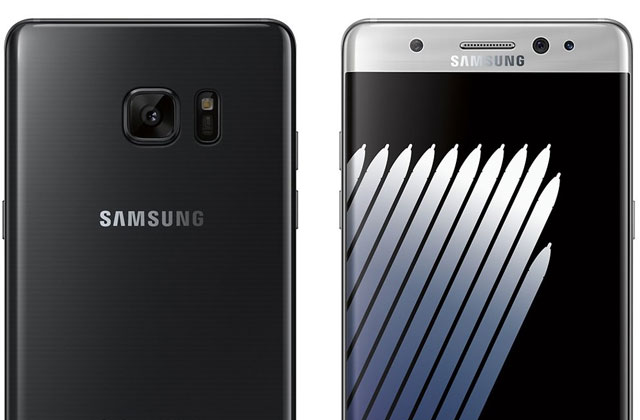
For more than a week, Samsung’s shares survived reports of its exploding Galaxy Note7 smartphone, a worldwide recall, and news of the “heartbreaking” US$1bn bill. Yet calls by airlines and regulators for passengers to follow somewhat mundane and obvious precautions helped send the stock down the most in more than three years.
That the shares fell on Monday three times as steeply as the MSCI Asia Pacific index may perhaps be explained by the Note7 incident combining two of the modern world’s most immutable traits: smartphones are ubiquitous, and airline safety is emotive.
Airlines haven’t been blind to the risks involved in carrying lithium-ion batteries. The same quality that makes them indispensable for electronic consumer goods — their ability to cram impressive quantities of energy into a tiny, light package — can also occasionally cause them to burn at temperatures hot enough to melt aluminum.
As a result, the United Nations aviation agency banned the carriage of bulk lithium-ion batteries on passenger planes earlier this year. That’s modestly good news for the cargo airlines that have remained in the business: air transport of the batteries, which covers as much as 30% of the 5,5bn cells produced each year, is a much less competitive market now that passenger airlines are mostly out of the picture.
But it’s not going to be enough to prevent all such fires. Even before the ban, incidents involving lithium-ion batteries on passenger aircraft had grown more common than those on cargo planes, according to the US Federal Aviation Administration. Li-ion-powered hoverboards were banned by most airlines long before Samsung’s troubles.
The good news for carriers, and electronics manufacturers, is that the lithium-ion ecosystem is too big to fail in the face of such a risk. While an on-board fire is every pilot’s and crew member’s worst nightmare, the number of lithium-ion incidents is trifling when you consider the universal reach of these power sources. In 2015, 3,5bn passengers caught a flight, yet just 11 such incidents were reported to the FAA. Your odds of being on a plane with a lithium-ion battery fire are pretty similar to the infinitesimal risk of being involved in an outright crash.
Airline regulations permit a surprisingly wide range of hazardous materials on board — you can typically carry up to 5kg of ammunition in checked baggage, and avalanche rescue backpacks containing explosive-charged airbags are often permitted in overhead lockers.
It’s not something that carriers like to advertise, but aviation safety is as much about reducing risk to acceptable levels as eliminating it altogether. Investors should at least take note of that perspective. — (c) 2016 Bloomberg LP




